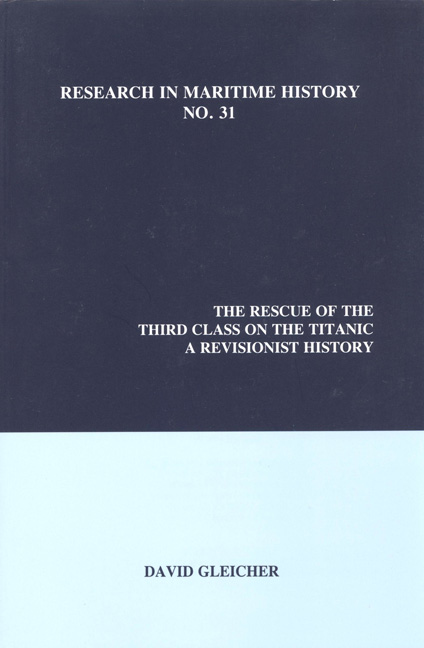Book contents
- Frontmatter
- Dedication
- Table of Contents
- List of Tables in the Text
- List of Illustrations
- Preface
- Notes on the Text
- Introduction
- Chapter 1 The “Popular Story”
- Chapter 2 The Nature Theatre of Oklahoma
- Chapter 3 Except the Rules
- Chapter 4 Departures
- Chapter 5 Like Wild Beasts Ready to Spring
- Chapter 6 Loose Ends
- Chapter 7 A Statistical Study
- Chapter 8 In Conclusion
- Appendix 1 Groupings of Nationalities into Regions
- Appendix 2 Routes to the Lifeboats
- Appendix 3 Deck Plans
- Bibliography
Chapter 2 - The Nature Theatre of Oklahoma
- Frontmatter
- Dedication
- Table of Contents
- List of Tables in the Text
- List of Illustrations
- Preface
- Notes on the Text
- Introduction
- Chapter 1 The “Popular Story”
- Chapter 2 The Nature Theatre of Oklahoma
- Chapter 3 Except the Rules
- Chapter 4 Departures
- Chapter 5 Like Wild Beasts Ready to Spring
- Chapter 6 Loose Ends
- Chapter 7 A Statistical Study
- Chapter 8 In Conclusion
- Appendix 1 Groupings of Nationalities into Regions
- Appendix 2 Routes to the Lifeboats
- Appendix 3 Deck Plans
- Bibliography
Summary
A Periodization
To undertake a systematic and consistent accounting of what “really happened“ to the Third Class passengers, we need a basic time line. This will help to mark convenient reference points on the activities and whereabouts of the Third Class passengers, from the occurrence of the accident at 11:40 PM until 2:20 AM, when the ship went under the sea. It is comprised of five phases, with more-or-less fuzzy borders separating one from the next:
Phase 1:11:40 PM-12:00 AM
Phase 2: 12:00-1:00 AM
Phase 3: 1:00-1:40 AM
Phase 4: 1:40-2:05 AM
Phase 5: 2:05-2:20 AM
In this chapter we will explore the first two phases.
Before the Beginning
It took roughly ten seconds at 11:40 PM of 14 April 1912. As Titanic was travelling at about twenty knots per hour, a collision with an iceberg opened a 300-foot gash in the starboard side of the ship's bow, well below the water surface and a mere ten feet above the keel. For the next two hours and forty minutes water filled the ship at the bow causing it to sink at the forward end. During the first phase of our time line - the twenty minutes after the accident - an awareness that something had happened to the ship seeped into the consciousness of passengers and crew alike. Estimates of varying degrees of accuracy concerning the damage were being made by different groups and individuals, and measures were being taken by the ship's authorities to placate the passengers, but as yet no active rescue was underway. A number of subjective elements at this stage were significant to the survival of an individual Third Class passenger. Among the most important were an early cognizance of the extreme danger of the situation; an understanding that getting to the upper decks where lifeboats were going to be loaded was imperative; and a willingness to disregard the stewards and others in authority to get to the upper decks. Each of the three Third Class survivors to appear before the American Inquiry - Daniel Buckley, Olaus Abelseth and Berk Pickard - met all these criteria.
- Type
- Chapter
- Information
- The Rescue of the Third Class on the TitanicA Revisionist History, pp. 37 - 78Publisher: Liverpool University PressPrint publication year: 2006



